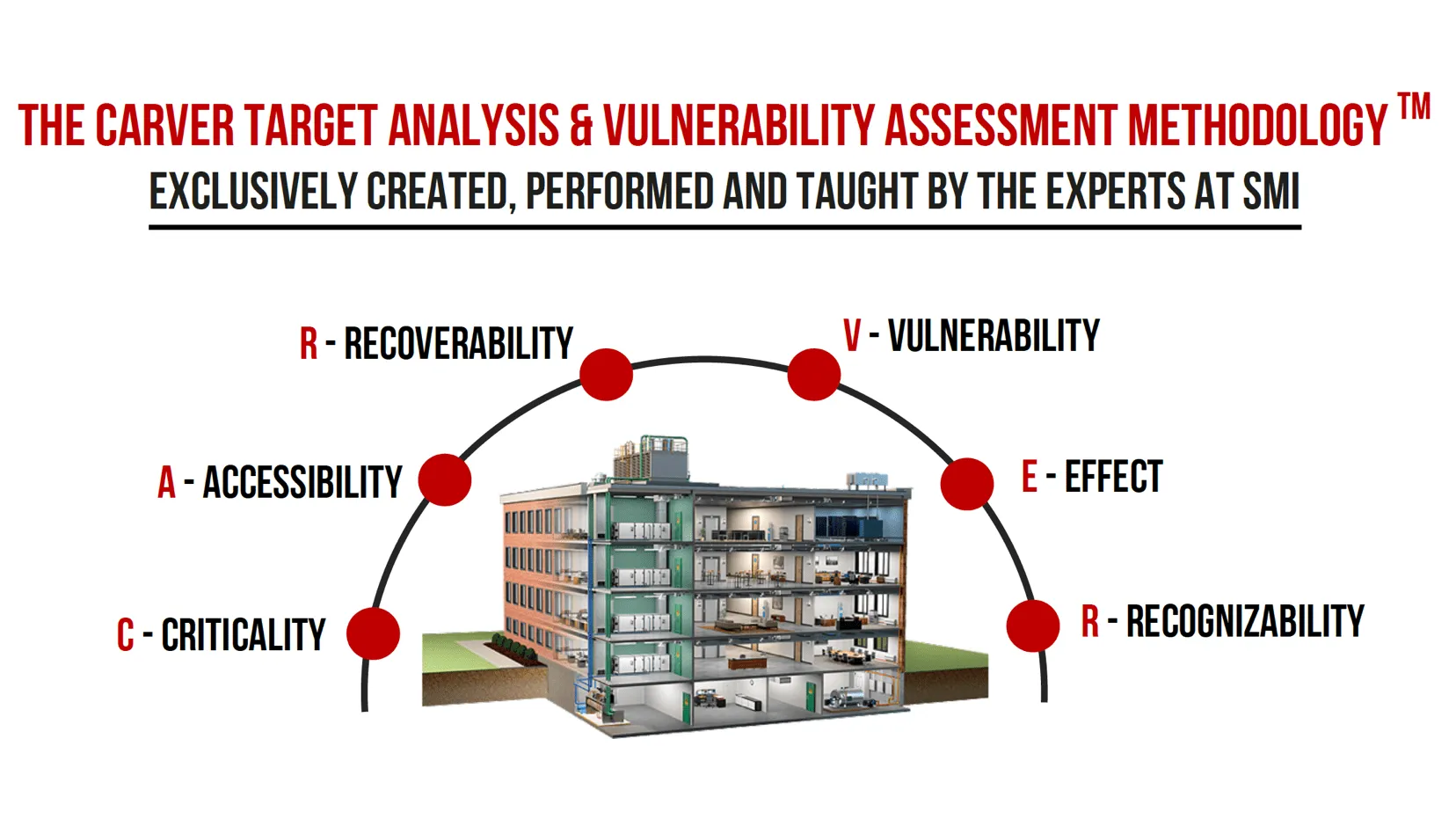
What is The CARVER Target Analysis and Vulnerability Assessment Methodology?
The CARVER Methodology is one of the most effective tools that a security professional can use.”
- General James L. Jones, Former U.S. National Security Advisor
What does CARVER mean?

Critically
Identify critical systems, single points of failure or choke points

Accessibility
Determine ease of access to critical systems, operations or assets

Recoverability
The time and effort taken to recover from an adverse event

Vulnerability
Security system effectiveness vs. adversary capability

Effect
Scope and magnitude of adverse consequences that would result from malicious actions and responses to them

Recognizability
Evaluate likelihood that potential adversaries would recognize the asset as a critical or valuable target
What is the CARVER Method?
A Security Vulnerability Assessment (SVA) is an understanding of the threats, weaknesses, and probability of attack, which could impact a facility, person, system or event.
As such, the CARVER Target Analysis and Vulnerability Assessment Methodology is a time-tested vulnerability assessment methodology that balances efficiency with reliability.
It is a unique analytical tool because it facilitates both a qualitative and a quantitative assessment of an asset’s vulnerabilities. Most assessment tools are limited to qualitative assessments. A quantitative assessment assists in highlighting vulnerabilities, prioritizing assets and remedial efforts.

The CARVER Value Rating Scale
Using CARVER successfully requires inserting the proper values into the CARVER matrix. Otherwise, its practitioners won’t be able to assess the probability of attack or risk to the asset accurately. When a CARVER matrix is completed, it provides the following results:

Get CARVER Certified from the “Godfather of CARVER”
CARVER Co-creator, Leo “the Godfather of CARVER” Labaj, on CARVER’s Origins:
"During my first six years in Special Activities Branch, I trained special operations forces and CIA paramilitary units in the use of explosives to conduct or plan sabotage operations. The training included not only how to destroy targets but also how to select targets for destruction to meet mission objectives. The target analysis methodology of choice at the time was called CARVE.
From 1972 to 1975, as the Vietnam War wound down, CARVE became an important part of the military’s target-analysis module. But after the war, and as incidents of international terrorism emerged and increased in frequency, analysts began to find CARVE lacking as a vulnerability assessment tool.
In 1976 CARVE became CARVER. It followed that if we (CIA-SAB) knew how to attack a target, we should also be able to prevent an attack on a target. So, we turned our hats around and strove to become counterterrorism “experts.”

Check out this preview of Sarah Bencie interviewing “The Godfather of CARVER.”

Get Your Free Chapter of the CARVER Methodology TODAY!

Want to know more about the CARVER Mindset, please enjoy this 75-minute video feature that is sure to open your eyes as to how intelligence professionals are trained to think. Utilize these same skills to make better decisions, keep your family and yourself safe, as well as become a more strategic thinker
Watch NOWHelpful links
Certification Courses
Carver 3 Day LIVE
Carver Strategy
Carver Keynote Speaking
Carver Leaderhip
Carver Mindset
Carver Fundamentals
Resources
Chalk Talk
News
Blog
The CARVER Training Institute is accredited by these fine organizations.


Helpful links
Certification Courses
Carver 3 Day LIVE
Carver Strategy
Carver Keynote Speaking
Carver Leaderhip
Carver Mindset
Carver Fundamentals
Resources
Chalk Talk
News
Blog
The CARVER Training Institute is accredited by these fine organizations.






